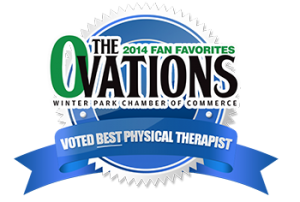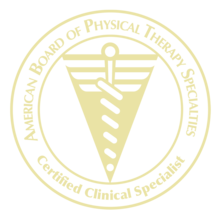Numbness and Tingling in Arm
Numbness and tingling is usually a symptom of a nerve being compressed or pinched, either at the spine or along its path in the body. A herniated disk is one of neck and back pain with symptoms radiating down the arm or leg. Tingling can also be caused from Thoracic Outlet Syndrome
What is a Herniated Disk?
Your spine is made up of 33 vertebrae (bones) that are stacked on top of one another. Between each vertebra is a cushion-like piece of cartilage called an “intervertebral disk.” Imagine the disk as a tire, with gelatin filling the hole in the tire. The rubbery outer part is called the “annulus,” and the gelatin is called the “nucleus.” When we’re young—under 30 years of age—the disk is made mostly of gelatin. As we age, we start to lose some of that gelatin. The disk becomes flatter and less flexible, making it easier to injure. In some cases, the gelatin can push out through a crack in the rubbery exterior and lead to a herniation (bulge) or rupture (tear).
Herniated disks are most common in the neck (cervical spine) and low back (lumbar spine). In the low back, disks may become damaged by excessive wear and tear or an injury.
Your risk for developing a herniated disk increases due to:
- Age – most herniated disks occur in people who are 30 to 50 years of age as a result of age-related disk degeneration. Herniated disks are less common after the age of 50, however, because with aging there is less fluid to push out of the disk
- Obesity – increased weight results in increased pressure on the disks
- Occupation – jobs that are physically demanding and involve repetitive tasks such as lifting, pushing, pulling, and twisting place additional stress on the disks
- Low levels of physical activity – people who are not physically active are less able to handle physical demands
Signs and Symptoms of a Herniated Disc
You might have mild to intense neck or back pain—or no pain at all. Herniated disks sometimes show up on the diagnostic images of people who have no symptoms.
When the disk ruptures (“herniates”) and a portion of the disk pushes outside its normal boundaries, it can “pinch” or press on spinal nerves or the spinal cord. This condition is called “radiculopathy.” The pressure can lead to back pain or to pain, numbness, or weakness in the legs.
The type and location of your symptoms depends on the location and the amount of pressure on the nerves:
- If you have a herniated disk in the cervical spine, you may have pain, tingling, numbness, weakness, or any combination of these symptoms in the arm, shoulder, or neck
- If you have a herniated disk in the lumbar spine, you may have pain, tingling, numbness, weakness, or any combination of these symptoms in the back, buttocks, or legs; most likely, your symptoms will be on only one side of your body
Often, symptoms from herniated disks are made worse by certain activities or positions. If you have a herniated disk in the lumbar spine:
- Pain may get worse with sitting, bending, and reaching
- Pain may be worst first thing in the morning and after staying in one position for a long time
- You may need to switch positions frequently
- You may prefer to stand rather than sit
If you have a herniated disk in the neck, symptoms are often worse with prolonged sitting and when lying down.
How Is a Herniated Disc in the Low Back Diagnosed?
Your physical therapist will conduct a thorough evaluation that includes a review of your medical history and will use screening tools to determine the likelihood of a herniated disk. For example, the therapist will:
- Ask you very specific questions about the location and behavior of your pain, weakness, and other symptoms
- Ask you to fill out a body diagram to indicate specific areas of pain, numbness, and tingling
- Perform tests of muscle strength and sensation to determine the severity of the pressure on your nerves
- Examine your posture and observe how you walk and perform other activities
- Measure the range of motion of your spine and your arms and legs
- Perform special tests, such as the straight leg raise test or the crossover straight leg raise test, that help diagnose a herniated disk
- Use manual therapy to evaluate the mobility of the joints and muscles in your spine
- Test the strength of important muscle groups
If you have muscle weakness and loss of sensation or very severe pain, special diagnostic tests, such as magnetic resonance imaging (MRI), electromyography, or nerve conduction studies may be needed. Physical therapists work closely with physicians and other health care providers to make certain that you receive an accurate diagnosis and appropriate treatment.
Research shows that in all but the most extreme cases (usually involving muscle weakness or high levels of pain), conservative care, such as physical therapy, has better results than surgery.
If your physical therapist’s evaluation indicates that there are no signs of nerve compression and you don’t have any signs of muscle weakness or numbness, treatment can begin right away. If the evaluation indicates that the herniated disk might be compressing the nerves, your therapist will consult with a physician specialist.
How Can a Physical Therapist Help Treat a Herniated Disc?
Your physical therapist’s overall purpose is to help you continue to participate in your daily activities and life roles. The therapist will design a treatment program based on both the findings of the evaluation and your personal goals. Your treatment program most likely will include a combination of exercises.
Your therapist will design:
- Exercises that involve specific movements to relieve nerve pressure and decrease pain and other symptoms, especially during the early stages of treatment
- Stretching and flexibility exercises to improve mobility in the joints and the muscles of your spine, arms, and legs—improving motion in a joint can be key to pain relief
- Strengthening exercises—strong trunk muscles provide support for your spinal joints, and strong arm and leg muscles help take some of the workload off those joints
- Aerobic exercise, which has been proven to be helpful in relieving pain, promoting a healthy body weight, and improving overall strength and mobility—all important factors in managing a herniated disk
This might sound like a lot of exercise, but don’t worry: research shows that the more exercise you can handle, the quicker you’ll get rid of your pain and other symptoms.
Your physical therapist also might decide to use a combination of other treatments:
- Manual therapy to improve the mobility of stiff joints and tight muscles that may be contributing to your symptoms
- Posture and movement education to show you how to make small changes in how you sit, stand, bend, and lift—even in how you sleep—to help relieve your pain and help you manage your condition on your own
- Special pain treatments—such as ice, traction, and electrical stimulation—to reduce pain that is severe and not relieved by exercise or manual therapy
Once your pain is gone, it will be important for you to continue your new posture and movement habits to keep your back healthy.
References:
http://www.moveforwardpt.com/SymptomsConditionsDetail.aspx?cid=79ef56df-780e-4ad0-963f-94364404125a#.VZB6NvlViko
Thoracic Outlet Syndrome (TOS) is a potentially painful and disabling condition of the upper extremity. It results from the compression of structures in the thoracic outlet, a space just above the first rib, and behind the clavicle (collar bone). Due to the range of signs and symptoms that can lead to a diagnosis of TOS, the incidence rates of the condition currently are unknown. Physical therapists work with individuals who have TOS to ease their symptoms and restore their upper-body function.
How Does Thoracic Outlet Syndrome Feel?
Because TOS generally is classified based upon the type of structures compressed, the symptoms experienced may vary. However, more than 90% of TOS cases are thought to be neurogenic (nerve compression) in nature (categories 3 and 4 below).
Arterial TOS
- Pain in the hand; rarely in shoulder or neck
- Coldness or cold intolerance
- Numbness and tingling
Venous TOS
- Pain in the arm
- Swelling in the arm
- Change in arm coloration (appears bluish)
- Feeling of heaviness in the arm
- Numbness and tingling in fingers and hands
True Neurogenic TOS
- Pain, numbness, and tingling in the hand, arm, shoulder, and often the neck
- Headaches
- Numbness and tingling of the arm, often waking the individual up at night
- Hand clumsiness
- Intolerance to cold
- Hand coldness and color changes
Disputed Neurogenic TOS
- Pain, numbness and tingling in the hand, arm, shoulder and often the neck
- Headaches
- Numbness and tingling of the arm, often waking the individual up at night
- Hand clumsiness
- Intolerance to cold
- Hand coldness and color changes
- Symptoms greater at night vs day
- Tests may come back normal (hence, the term “disputed”).
How Is Thoracic Outlet Syndrome Diagnosed?
Diagnosis of TOS begins with a thorough health history and clinical examination.
Your physical therapist will likely check for color changes in the affected area, and gently attempt to provoke symptoms by moving the affected limb in different directions.
You also may be referred for diagnostic testing, such as a Doppler ultrasound, which can confirm arterial and venous TOS, or nerve conduction velocity testing to help confirm a true neurogenic TOS.
Your physical therapist may be the first to recognize an onset of TOS, because of its effects on your physical function. Your physical therapist may ask you:
- When did you begin experiencing these symptoms, and when are they the worst?
- Have you noticed any change in your symptoms when the temperature changes?
- Have you noticed any significant changes in your ability to perform physical tasks that require hand movements?
- Have you noticed any changes in the appearance of your arm or hand?
In addition, your physical therapist will rule out other conditions, which may mimic this disorder. Your therapist may ask you to fill out a questionnaire in order to better understand your physical state, and to screen for the presence of other conditions.
How Can a Physical Therapist Help Treat Thoracic Outlet Syndrome?
Once you have received a diagnosis of TOS, your physical therapist will work with you to develop a treatment plan to help ease the discomfort, and improve your ability to perform daily activities. Most research on this condition recommends a treatment plan that involves physical therapy to help ease your symptoms and improve function.
Physical therapy treatments may include:
Manual Therapy. Manual (hands-on) therapy may be applied to manipulate or mobilize the nerves of the arm to help reduce symptoms, such as pain and numbness/tingling. Your physical therapist also may attempt to gently mobilize your first rib and/or collar bone.
Movement and Strengthening Exercises. Your physical therapist will teach you muscle-strengthening exercises to improve movement and strength in the affected area.
Education. Your physical therapist will teach you strategies that can help minimize your symptoms while performing your daily functional activities.
Activity modification and postural strategies: Your physical therapist will teach you positions and strategies to place less stress on the structures involved with TOS.
Can Thoracic Outlet Syndrome be Prevented?
While some cases of TOS cannot be prevented, such as those due to anatomical variations, congenital conditions, trauma, or space-occupying lesions, others may be avoidable. Understanding risk factors that could make you more likely to develop this condition is the first step in prevention.
Your physical therapist will work with you to develop strategies to help you better understand and manage your risk factors and symptoms. As with many conditions, education is key. Understanding strategies, such as methods of reducing symptoms while performing activities, can help you live a full and functional life after the onset of TOS.
References:
http://www.moveforwardpt.com/SymptomsConditionsDetail.aspx?cid=068e8205-a221-46d0-8202-c3e6a5a9700d#.VYronflViko





